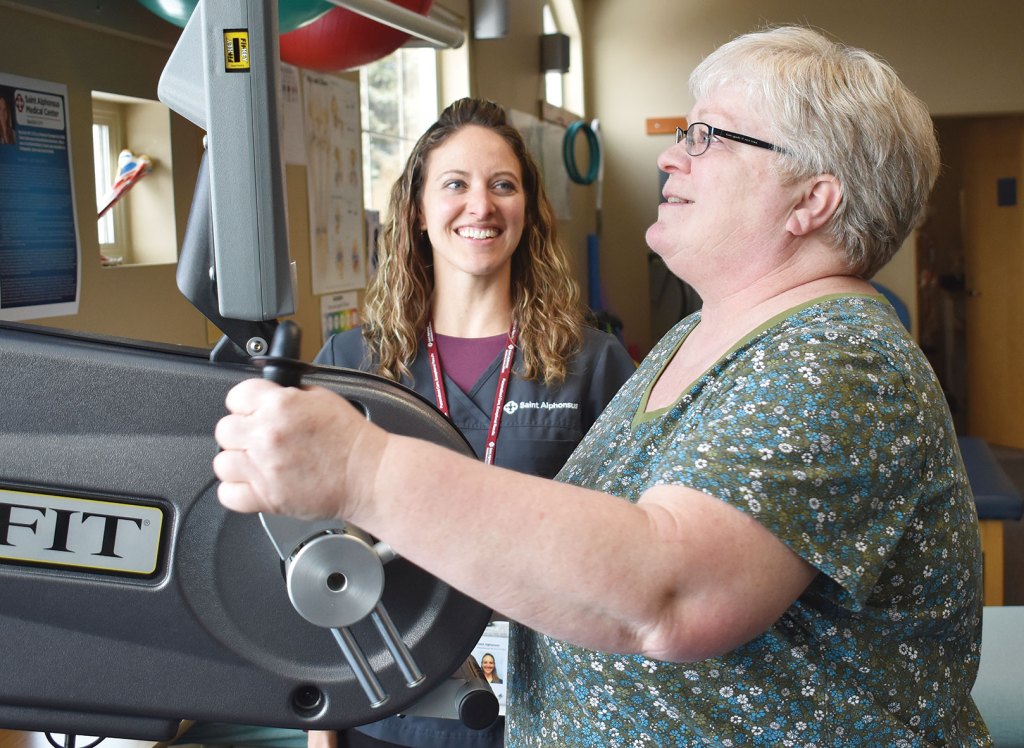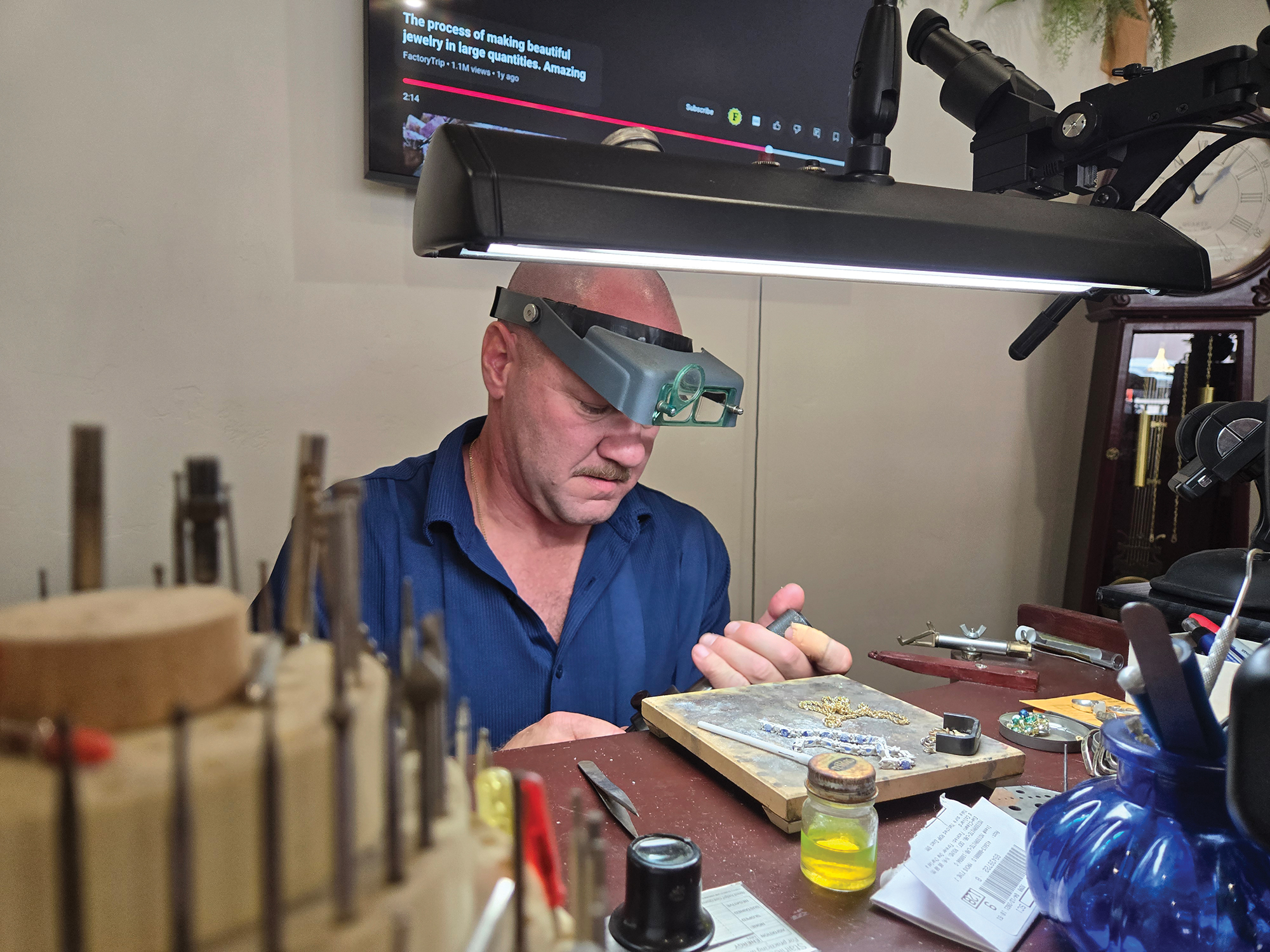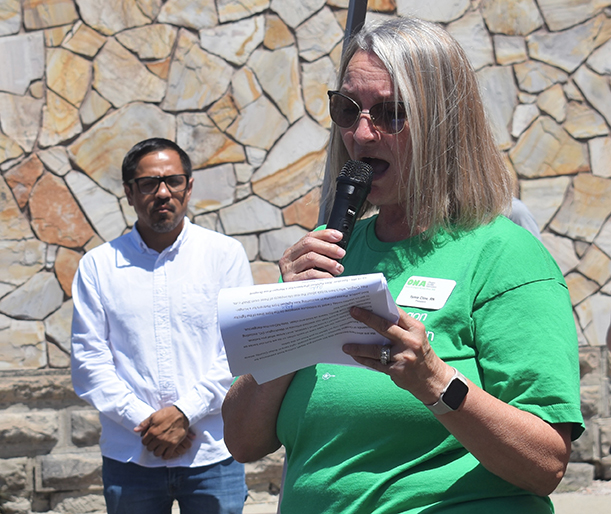Help With Healing
Published 7:30 am Saturday, March 18, 2017

- Help With Healing
Susan Watt grins, more than ready to get going with her physical therapy session.
She steps up to machine that will work her shoulders, standing upright as she “pedals” with her hands.
“No reason hurting if you don’t have to,” says Watt, 56, who has sought physical therapy after surgery. “They help you work with the ability you have to do the things you used to — just in a different way.”
As she talks, physical therapist Kim Zinn helps Watt achieve proper form before attempting a strength exercise.
“There’s never a wrong question, and they take the time to explain things,” Watt says. “I look forward to coming to it — I want to get better.”
Watt’s physical therapy sessions have been at St. Alphonsus Rehabilitation Services (STARS), located at St. Alphonsus Medical Center-Baker City.
STARS is a separate entity from the hospital, and provides outpatient rehabilitation services — physical therapy and occupational therapy — for Saint Alphonsus.
“We’ve expanded services to meet the community need,” said Kim Wellman, business manager.
STARS now has three physical therapists, two physical therapist assistants, and one occupational therapist.
The newest physical therapist is Jessica Brand, who had previously worked at STARS in Baker City as a traveling physical therapist. She’s originally from Cato, New York.
Addressing Pain
As Watt worked through her shoulder exercises with Zinn, she talked about how physical therapy has improved her quality of life, although it does take work and doing exercises at home between sessions.
“It may take some time, effort and maybe some discomfort, but if you work on your exercises between your PT sessions, you will notice things become easier or improved,” she said. “There is nothing more rewarding than when you notice your improvement — no matter how big or small the improvement, it’s a great feeling.”
The therapists at STARS now have direct access, which means they can evaluate and treat a patient without a physician referral (with the exception of Medicare, Medicaid and Workers Compensation).
“Eliminating the referral requirements and making physical therapy care more accessible to more people,” Wellman said.
Direct access, Zinn said, “allows quicker access to therapy services such as after a sprained ankle, onset of sciatica or if a person wakes up with a ‘kink’ in their shoulder or neck.”
“These types of issues can often be quickly addressed and resolved in therapy,” Zinn said, “which can save the patient time and money, as well as shorten the overall duration of time they are in pain.”
As for pain, the Centers for Disease Control and Prevention (CDC) has developed guidelines that put a preference on physical therapy instead of prescription opioids.
Abuse of opioids has been on the rise since 1999, according to the CDC, and from 2000 to 2015 more than half a million people died from drug overdoses. The CDC also reports that 91 Americans die every day from an opioid overdose.
A post on the American Physical Therapy Association’s website explains how the CDC’s guidelines for prescribing opioids “deliver a clear message that physical therapists and physical therapist assistants have known for some time: there are better, safer ways to treat chronic pain than the use of opioids.”
An alternative, says Zinn, is “mechanical therapy.”
See more in the March 17, 2017, issue of the Baker City Herald.









